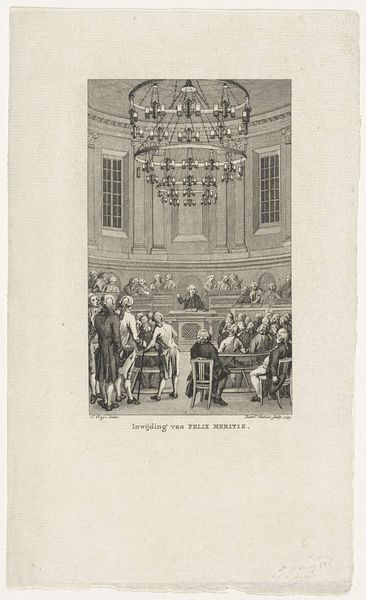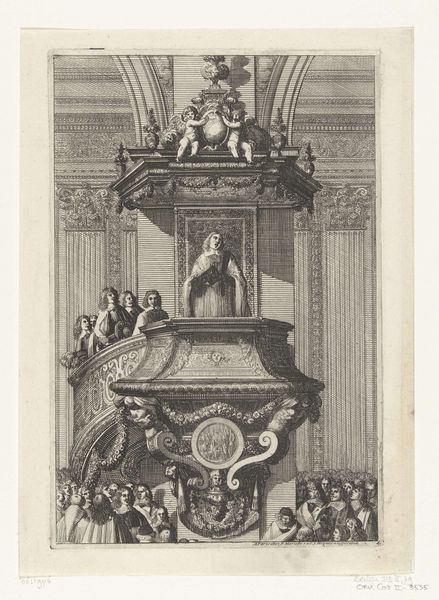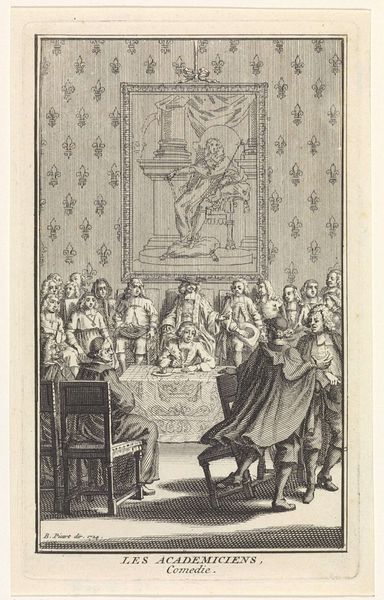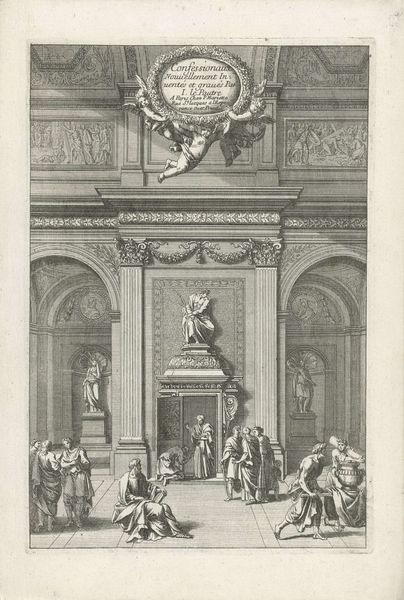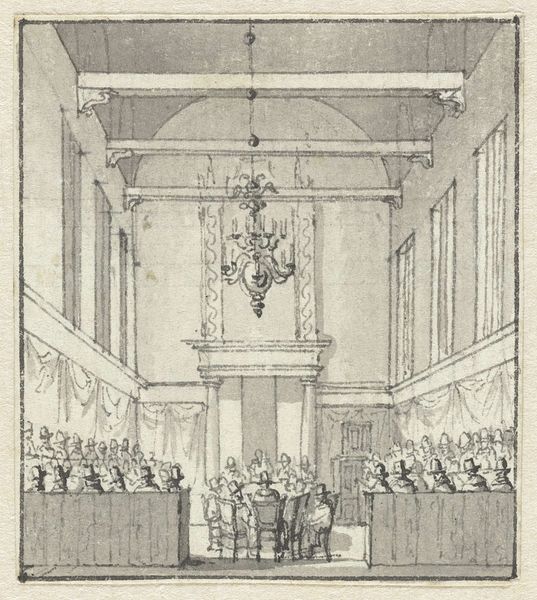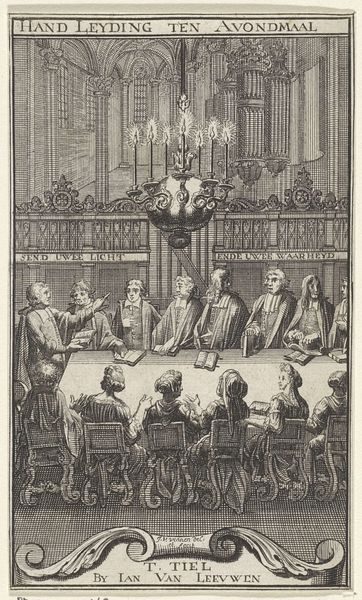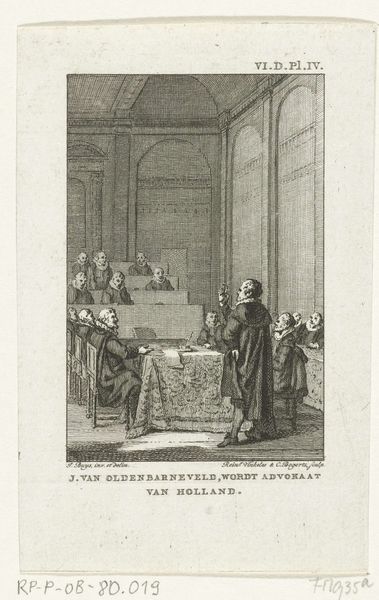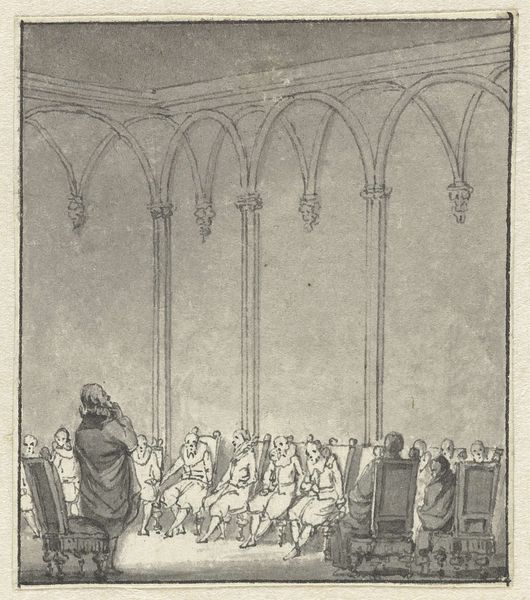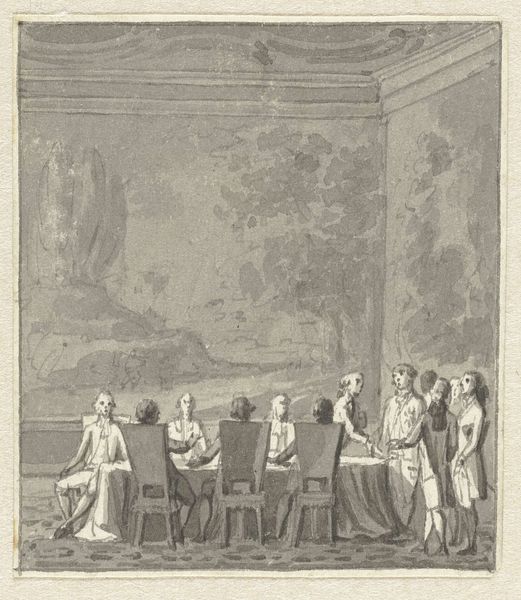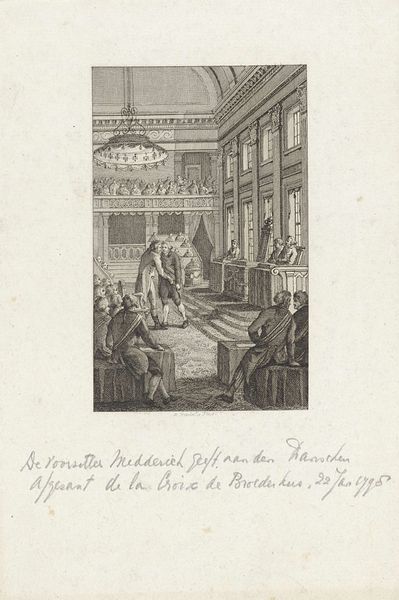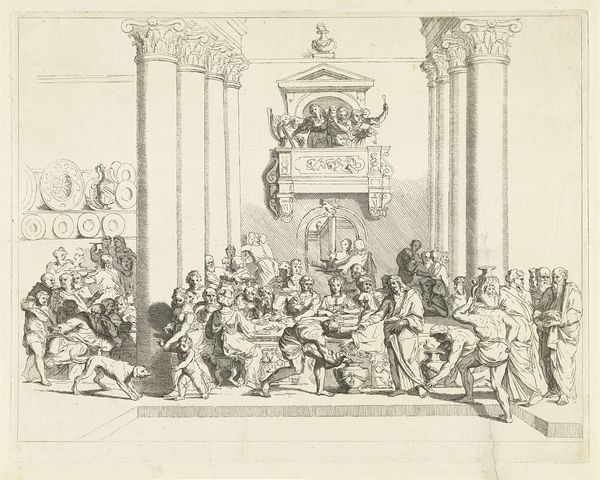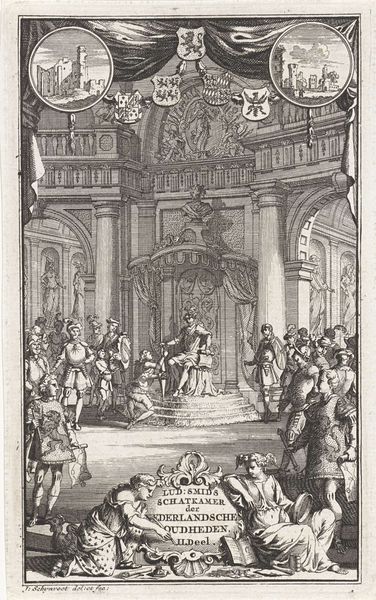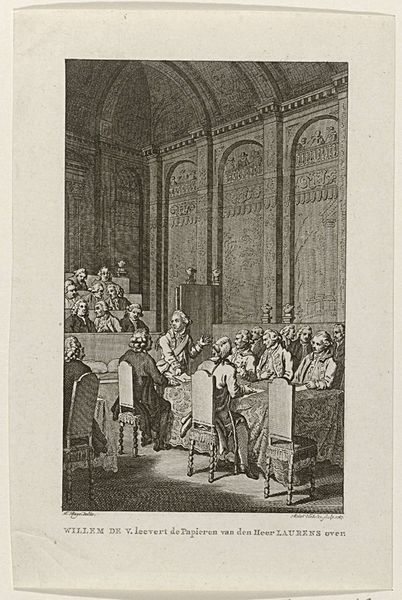
print, engraving
#
neoclacissism
# print
#
old engraving style
#
history-painting
#
engraving
Dimensions: height 230 mm, width 155 mm
Copyright: Rijks Museum: Open Domain
Curator: Here we have Reinier Vinkeles' 1799 engraving, "Inwijding van Felix Meritis," which translates to "Inauguration of Felix Meritis." It depicts a formal ceremony. Editor: My immediate reaction is one of cool austerity. The sharp lines of the engraving and the formality of the scene create a sense of restrained order. You can almost feel the chill of that monumental chandelier hanging overhead. Curator: Precisely! The print captures the spirit of Neoclassicism. Vinkeles uses crisp lines and clear composition, drawing heavily from classical ideals of balance and civic virtue. Felix Meritis itself was a society dedicated to enlightenment principles. Editor: Let’s talk about the material; this is an engraving, so we're looking at a process of meticulous carving into a metal plate, inking, and then printing. It speaks to the era’s reliance on skilled craftsmanship to disseminate knowledge and ideas. Every line had to be manually etched into the plate. Imagine the labor involved. Curator: A crucial point. Each line holds meaning beyond just representing form; they are carriers of cultural values associated with reason, education, and public service. Observe how the subjects direct their attention, representing a singular intellectual goal. The image of enlightenment—both literally, from the chandelier, and figuratively, in their dedication. Editor: And that intense concentration makes me wonder about the cost of those Enlightenment ideals. There is very little visible of working hands here; even with the high value of disseminating such knowledge, the lack of visible manual work gives this intellectual dedication an otherworldly quality. It separates ideas from labor in a strange way. Curator: An interesting observation. It prompts me to think further on how ideals may differ from the socio-economic circumstances under which people labor. However, consider the engraver's labor: he is channeling and enabling this distribution of knowledge. Editor: Agreed, engraving here embodies both a skilled trade, necessary to this historical record, and acts as its own symbol for this Enlightenment era—precision and exact replication. Well, this examination certainly shifted my perspective! Curator: Indeed! Reflecting upon both the intellectualism within the image and its physical means of production gives a far richer context.
Comments
No comments
Be the first to comment and join the conversation on the ultimate creative platform.
